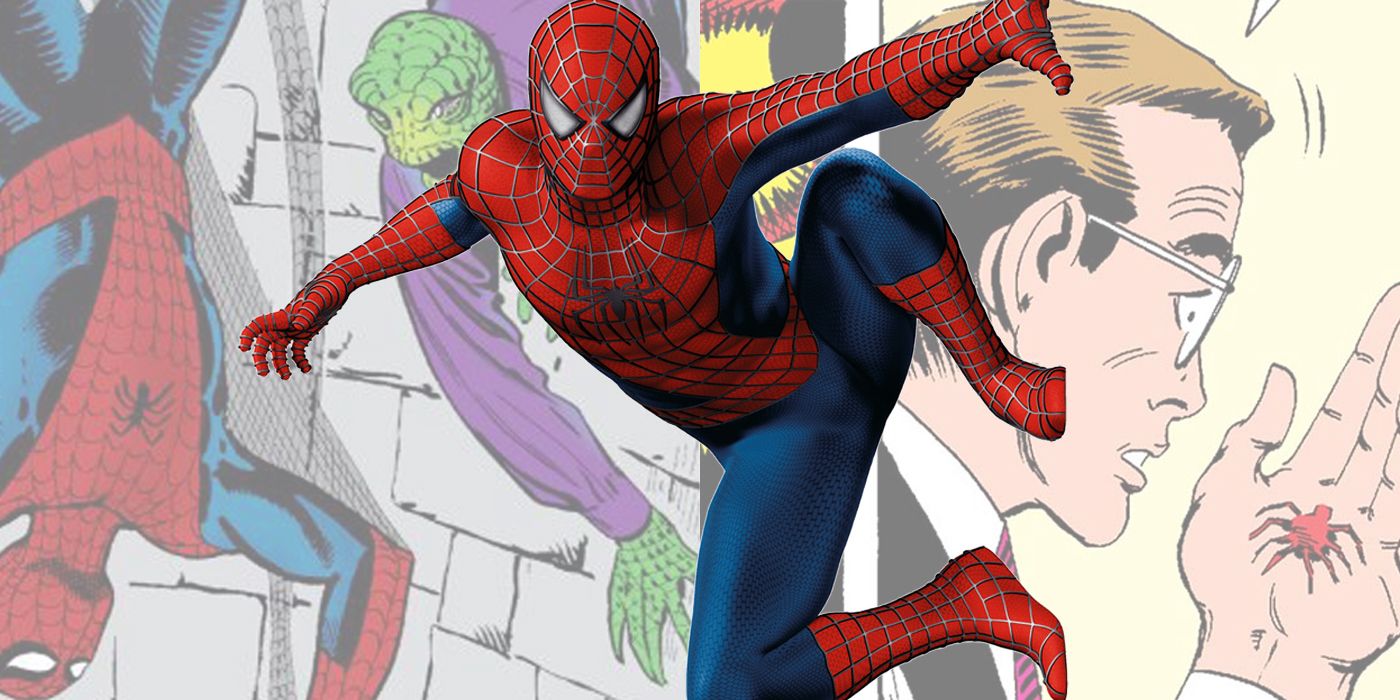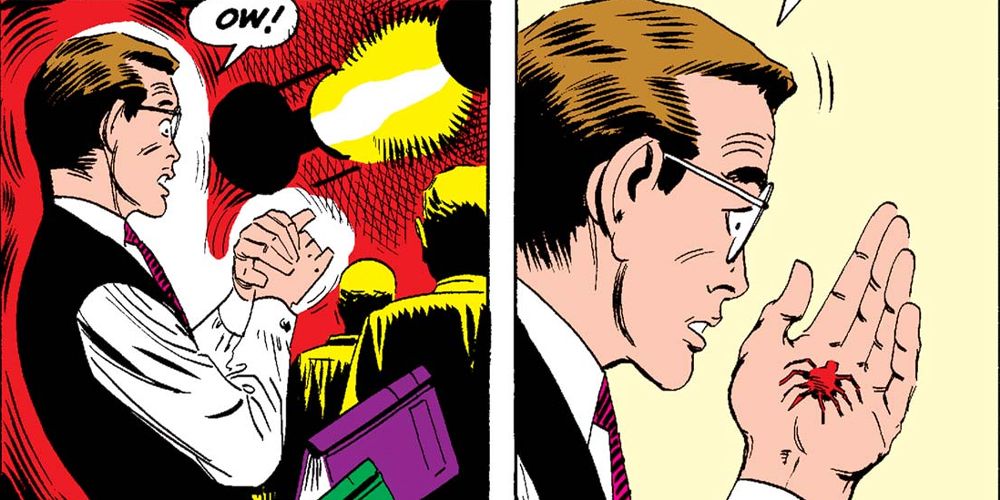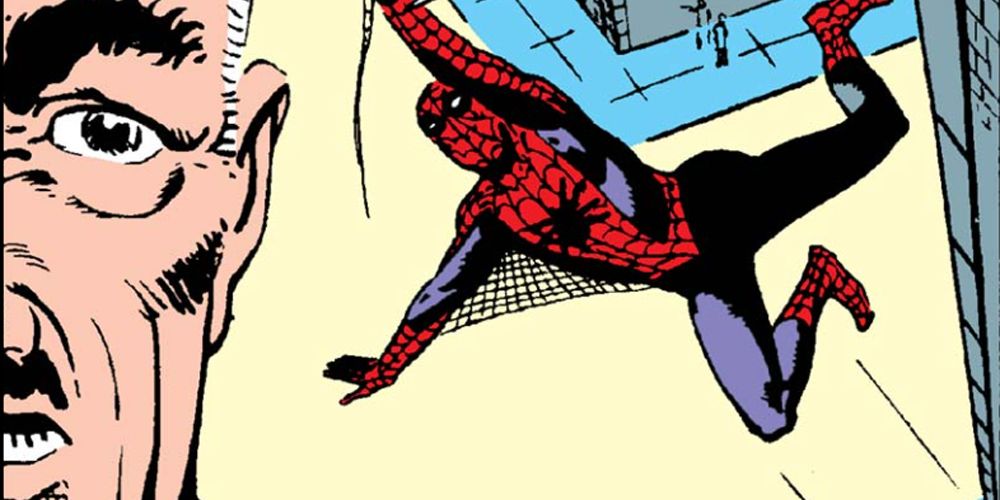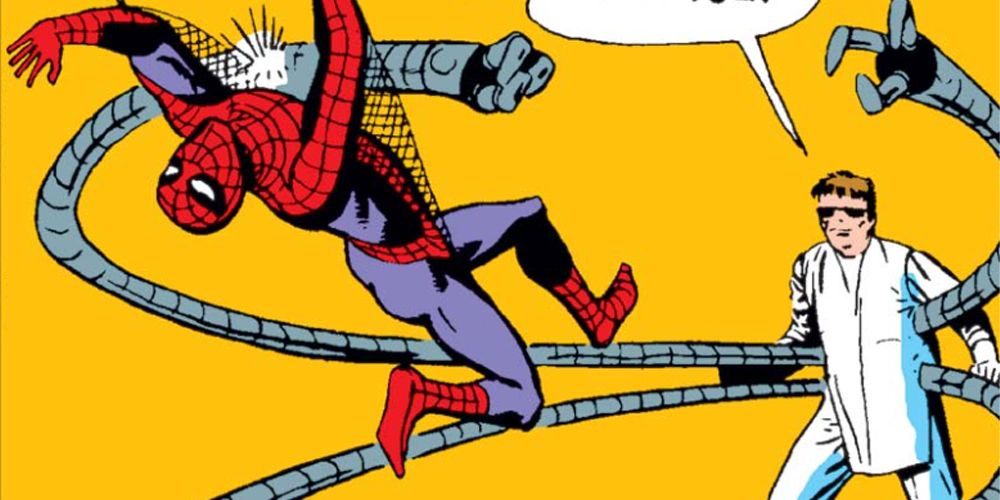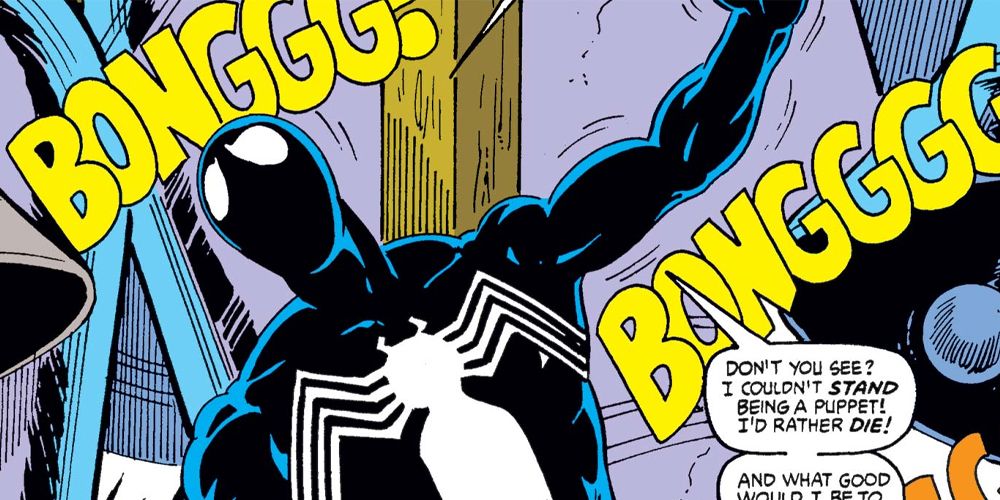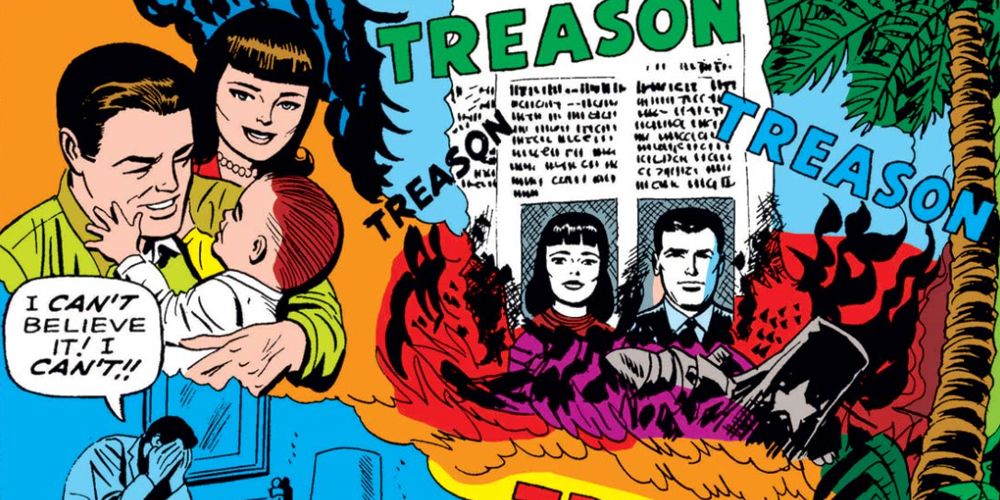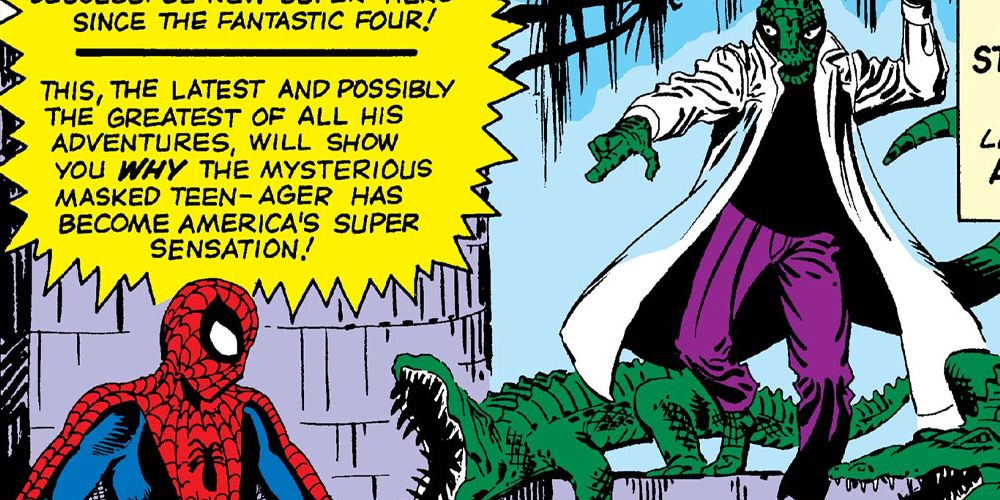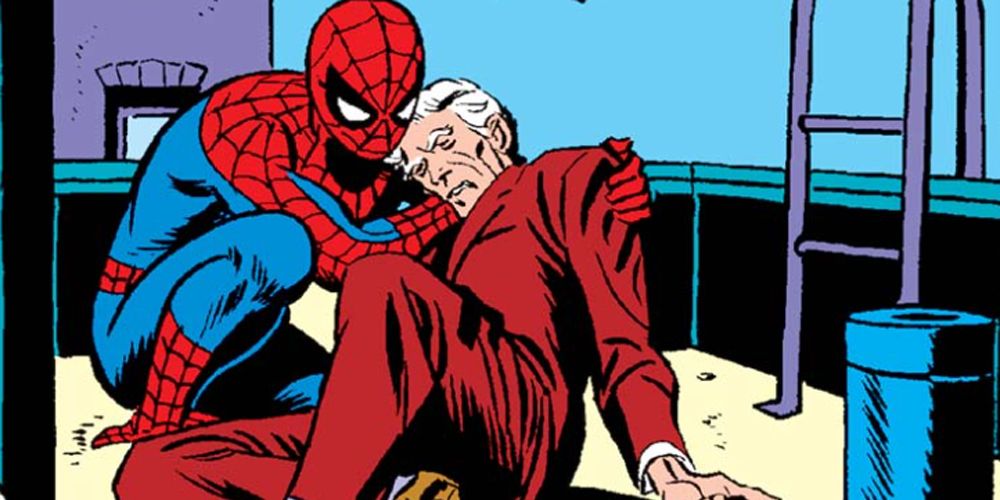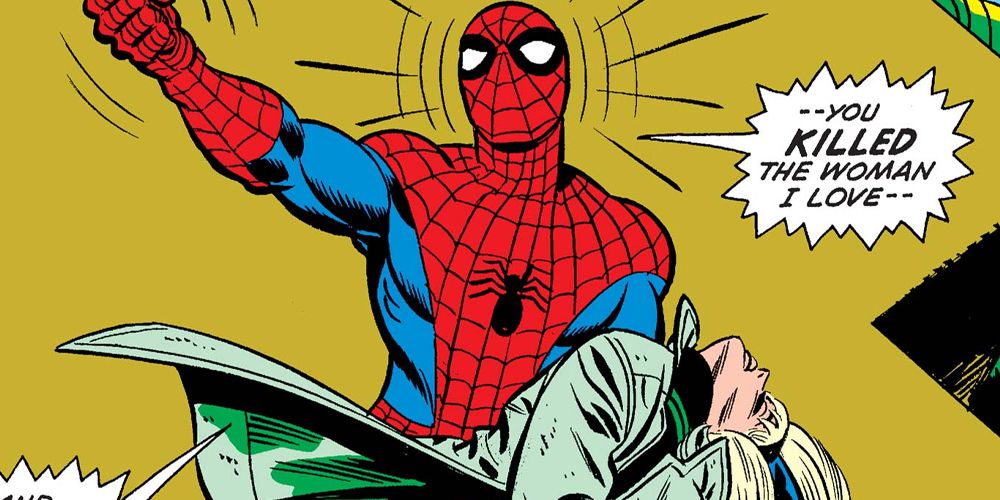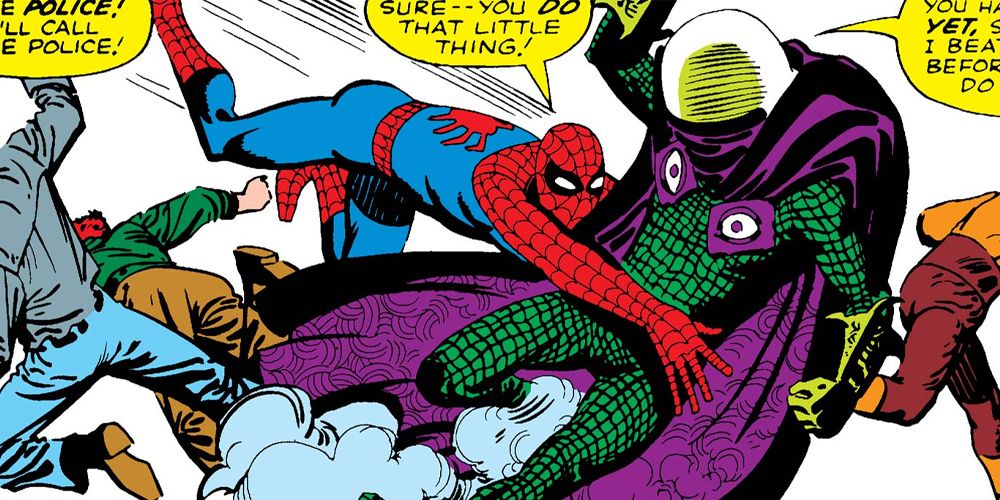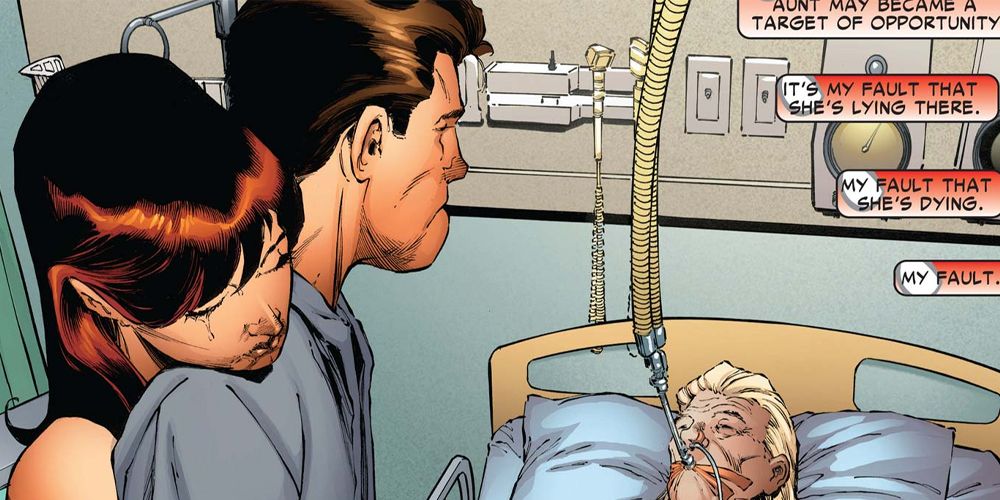Spider-Man is a reliably popular character, entertaining audiences of any age across three different cinematic interpretations. Spider-Man: No Way Home recently put a bow on the nearly two decades worth of Spider-Man films, which in turn direct adoration towards the source material.
Pivotal comics from the webhead's history have been honored with on-screen adaptations, regardless if they are beloved or divisive. With presumably more films to come in the years ahead, the breadth of Spider-Man content to draw from flings open the doors of possibility. Previous films already demonstrated this promise by treading iconic ground in regards to the stories that have enlivened their films.
**Major Spoilers For Spider-Man: No Way Home Follow**
10 Spider-Man! Is Faithfully Adapted In Spider-Man
2002 marks the debut of Spider-Man in live-action and cements a turning point for superhero cinema. The depth given characters that swing around in spandex is expanded with the likes of Spider-Man, giving audiences a protagonist that is remarkably ordinary yet given immense abilities. The origin of Peter Parker's powers depicted in the film is reasonably faithful to the storyline presented in Stan Lee and Steve Ditko's Amazing Fantasy #15. Peter, while attending a demonstration, is bitten by a radioactive spider and given incredible abilities. The film adds characters such as Mary Jane and Harry Osborn into the mix but retains the essential plot.
9 J. Jonah Jameson Smears The Hero In Spider-Man And Its Cinematic Namesake
J. Jonah Jameson is simultaneously loved and hated because of his journalistic crusade against the web-slinger. Demonstrating the power of the press, Jameson is relentless in this endeavor and turns public perception against the hero in Amazing Spider-Man #1, once again by Stan Lee and Steve Ditko.
J.K. Simmons brings the newspaper editor to life in Spider-Man and returns to the role throughout the original trilogy. Simmons' portrayal is beloved due to its faithfulness to the comic iteration of the character and the actor has even debuted the character in the Marvel Cinematic Universe proper.
8 Spider-Man 2 Is One Of The Best Due To Spider-Man Versus Doctor Octopus
A seemingly ridiculous character finds realistic ground in Spider-Man 2, as Doctor Octopus goes about harassing New York in order to harness the power of the sun in the palm of [his] hand. Alfred Molina's portrayal warranted a return akin to Simmons' retooling of Jameson and has made the middle chapter of the trilogy the most celebrated.
Doctor Octopus is a very early foe of Spider-Man's, first appearing in Lee and Ditko's Amazing Spider-Man #3. The general story of the comic remains intact: atomic scientist Otto Octavius is conducting an experiment when it goes wrong and fuses the mechanical arms to his body. The inhibitor chip angle is original to the film, though acts as an expansion of the comic.
7 Til Death Do Us Part Is In The Mix In Spider-Man 3
Spider-Man 3 finished the original trilogy off with a whimper: too many villains, with one being underwhelming in his portrayal. Topher Grace's Eddie Brock/Venom is shoehorned into the third chapter thanks to the studio's insistence on the character's inclusion and it shows. Brock just isn't all that important to the story and seems an afterthought to the scriptwriters.
Nevertheless, the film boasts a version of an iconic scene from Spider-Man lore from Louise Simonson and Greg LaRocque's Web of Spider-Man #1, where Peter desperately tries to rid himself of the symbiote with the clanging of a bell. Brock is not present in the comic at this time, again demonstrating the extraneous nature of his role.
6 The Parents Of Peter Parker! Goes Unfulfilled In The Amazing Spider-Man Series
Spider-Man: No Way Home has done something unexpected: the film has potentially redeemed Andrew Garfield's iteration of the character. First appearing in 2012's The Amazing Spider-Man, Garfield's web-swinging was cut short following the disappointing returns of its 2014 sequel. Thanks to this, some of the series' plotlines have gone unresolved, particularly one involving the mysterious nature of Peter's parents' work. This echoes a similar situation in Amazing Spider-Man Annual #5, by Stan Lee and Larry Lieber, which portrays the hero's parents as potentially treasonous agents. This might've been the path the films were leading viewers down; sadly, it may forever remain an unknown.
5 The Amazing Spider-Man Refreshingly Uses Face-To-Face With... The Lizard!
Before The Amazing Spider-Man 2, Garfield's webhead was enjoying some success thanks to his first outing. The original TASM pitted him against Rhys' Ifans' Curt Connors/Lizard, with both actors giving stellar performances in their respective roles. Belonging to the collection of rogues that make up Spidey's earliest comic encounters, Lizard is another scientist-turned-monster that Peter must confront, a common motif across his gallery of villains.
Once again Stan Lee and Steve Ditko recount the story of Peter delving into the sewers to face the reptilian foe. A memorable scene receives screen time in the film: Peter's use of a camera to take pictures of his fight with the Lizard beneath the streets of New York is pulled directly from this run.
4 Garfield Carries The Weight Of Responsibility From And Death Shall Come!
Once again written by Stan Lee, though illustrated by Gil Kane, Amazing Spider-Man #90 finds Spidey combating Doctor Octopus. When the mad scientist's arms crush a chimney, the debris hurdles toward a child on the pavement. George Stacy, Gwen's father, moves the kid in time but is struck. Spider-Man relocates Stacy to the rooftops to offer aid, but it's too late. TASM adapts this event to Spidey's battle with the Lizard and changes Stacy's dying wishes. While in the comic he only implores Peter to take care of Gwen, the movie sees the dying police captain beg the hero to leave her out of his life.
3 The Amazing Spider-Man's Legacy Rests On The Night Gwen Stacy Died
Referenced throughout the second and third act of Spider-Man: No Way Home, Andrew Garfield's entire legacy as the webhead rests on the events of Gerry Conway and Gil Kane's Amazing Spider-Man #121-122. Known as The Night Gwen Stacy Died, Spider-Man loses his love interest amidst conflict with the Green Goblin. It proved an astonishing development in its original debut and similarly wowed audiences when adapted in The Amazing Spider-Man 2. This shapes Peter for years to come, both in comic and cinematic form, and is perhaps the only lasting impact the film series has.
2 One Step Ahead In The Menace Of... Mysterio! And Far From Home
Like any Spider-Man film, Far From Home had a lot to live up to. It was following the massive cinematic triumph that was Avengers: Endgame, giving audiences a glimpse into the next chapter of the MCU. FFH draws heavily from Lee and Ditko's Amazing Spider-Man #13, where Mysterio is a special-effects artist effectively deceiving everyone into believing he's a superhero.
The addition of the foreign setting places Peter further out of his comfort zone, thus cementing the illusionist as a formidable foe whether on the page or screen. Jake Gyllenhaal commands the screen in the role, but it's cut short by his defeat in the end.
1 One More Day Is Remixed In Spider-Man: No Way Home
Mention J. Michael Straczynski and Joe Quesada's One More Day storyline and Spider-Man fans collectively groan. It's a divisive arc, spanning titles like Amazing Spider-Man, Friendly Neighborhood Spider-Man, and Sensational Spider-Man, and sees Peter give up his relationship with Mary Jane in order to save Aunt May's life.
One More Day involves a deal with the villain Mephisto, an element omitted from Spider-Man: No Way Home, which attempts to adapt some elements from the storyline. By the end of the film, Peter does let go of his relationship with Michelle Jones, though by this point Aunt May has already perished. It's not an MCU adaptation without a little remixing in the works.

